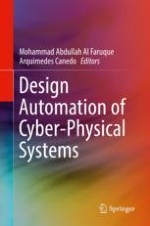2019 | OriginalPaper | Buchkapitel
4. Formal Techniques for Verification and Testing of Cyber-Physical Systems
verfasst von : Jyotirmoy V. Deshmukh, Sriram Sankaranarayanan
Erschienen in: Design Automation of Cyber-Physical Systems
Aktivieren Sie unsere intelligente Suche, um passende Fachinhalte oder Patente zu finden.
Wählen Sie Textabschnitte aus um mit Künstlicher Intelligenz passenden Patente zu finden. powered by
Markieren Sie Textabschnitte, um KI-gestützt weitere passende Inhalte zu finden. powered by
